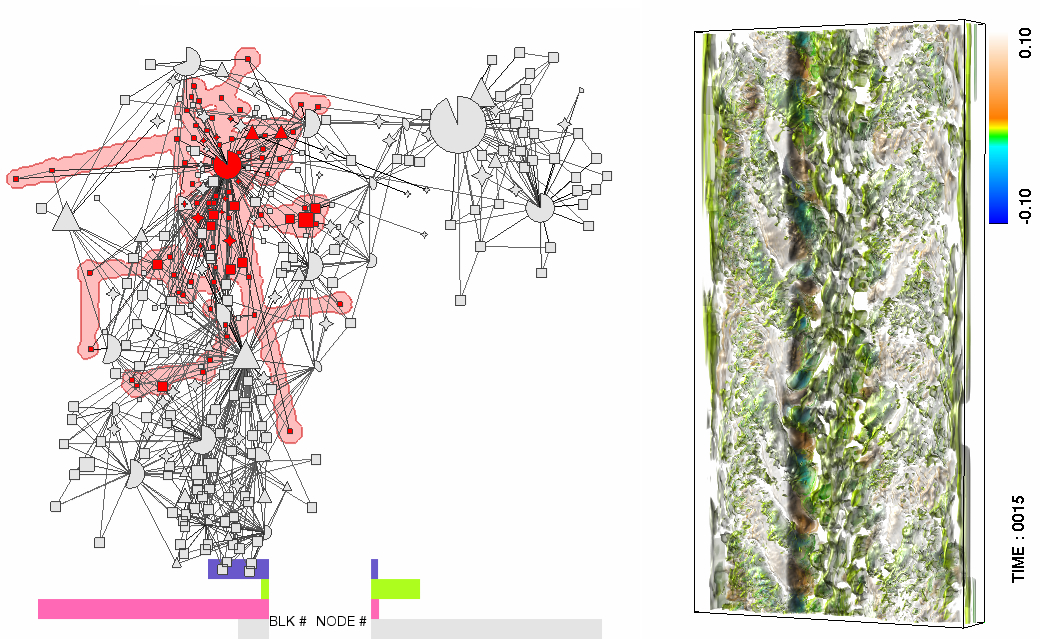Introduction
Our graph-based approach to time-varying volume data analysis and visualization derives a transition graph from the time-varying data. In the transition graph, a node denotes a state which represents a group of spatiotemporally neighboring blocks, and a directed edge between two states indicates their transition probability. The graph mining solution then automatically extracts meaningful features from the transition graph. This is achieved through the utilization of a series of graph analysis techniques including graph simplification, community detection, and visual recommendation. Our goal is to allow significant reduction of cognition overhead and interaction cost when exploring the underlying time-varying volumetric data using the graph-based technique.

A community is detected from the transition graph and highlighted using Bubble Set in the graph view (left). The corresponding blocks of the community are rendered in the volume view (right).
Download
We provide the source code of the important steps in our approach. These important steps include state clustering, graph simplification, SimRank, and graph distance calculation. The source code has been compiled successfully under Ubuntu 14.04. The source code makes use of the following three external libraries:
- MPI library used for parallel computation in clustering states
- Eigen library used to compute eigenvalues and eigenvectors
- SLPA library used to perform community detection
Source Code
- Click here to download the source code: mining-transgraph.tar.gz
Publications
Yi Gu, Chaoli Wang, Tom Peterka, Robert Jacob, and Seung Hyun Kim. Mining Graphs for Understanding Time-Varying Volumetric Data. IEEE Transactions on Visualization and Computer Graphics (IEEE SciVis 2015), 22(1):965-974, Jan 2016.
Yi Gu and Chaoli Wang. TransGraph: Hierarchical Exploration of Transition Relationships in Time-Varying Volumetric Data. IEEE Transactions on Visualization and Computer Graphics (IEEE Vis 2011), 17(12):2015-2024, Dec 2011.